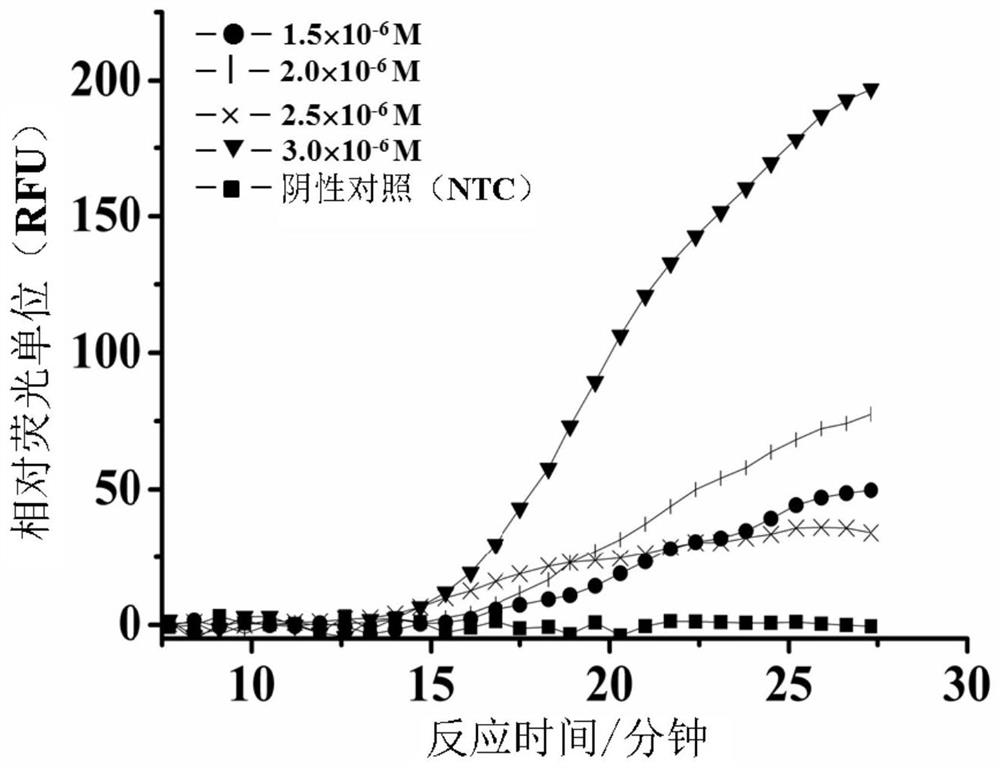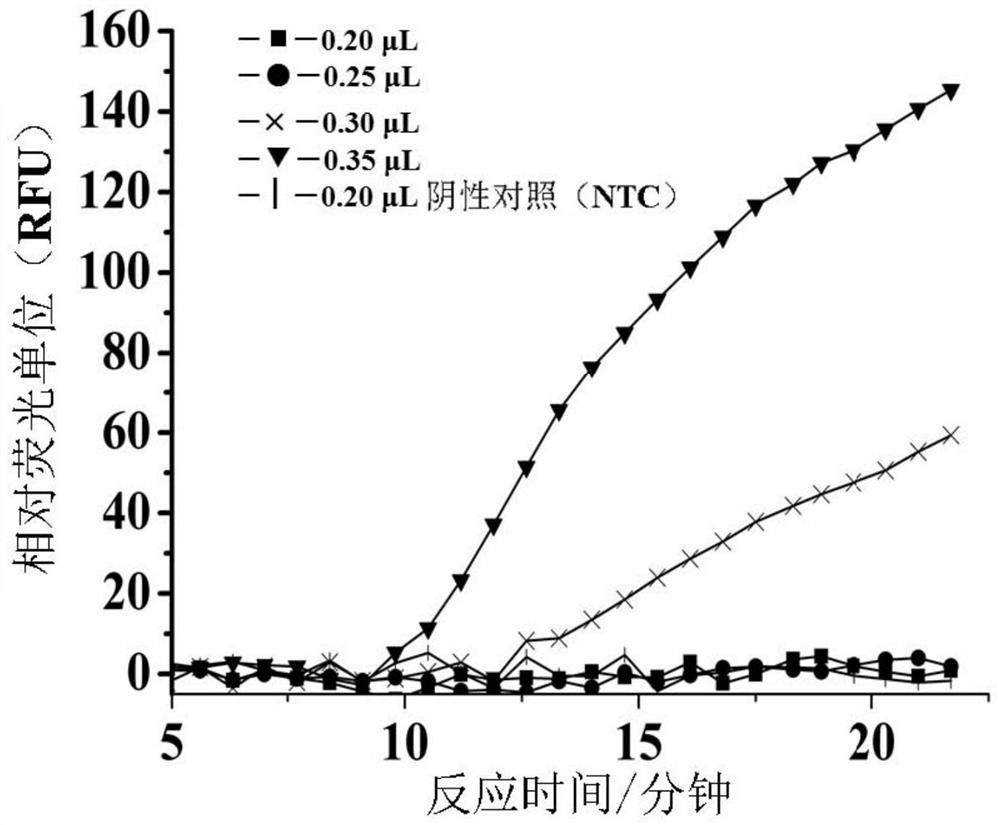Method for amplifying and detecting nucleic acid and kit
A technology for targeting nucleic acids and oligonucleotides, which is applied in biochemical equipment and methods, and the determination/inspection of microorganisms.
- Summary
- Abstract
- Description
- Claims
- Application Information
AI Technical Summary
Problems solved by technology
Method used
Image
Examples
Embodiment 1
[0225] 5.2 Example 1: Optimization of primer concentration in the fast strand displacement amplification (SEA) reaction system.
[0226] The following study was performed to test the effect of primer concentration on the amplification rate of the fast SEA reaction.
[0227] Based on the target nucleic acid sequence of the hypervariable region of the 16S rRNA coding gene of Listeria monocytogenes, a pair of specific primers were designed by NUPACK software (www.nupack.org / ). , the target sequence is a 50bp synthetic fragment with the following sequence:
[0228] 5'- GGGTCATTGGAAACTGGAAGACTGGAGTGCAGAAGAGGAGAGTGGAATTC-3' (SEQ ID NO: 1),
[0229] The primer sequences are:
[0230] Primer 1: 5'-GTCATTGGAAACTGGAAGACTG-3' (M58822.1 b) (SEQ ID NO: 2);
[0231] Primer 2:5'-CCACTCTCCTCTTCTGCAC-3'(M58822.1 b)(SEQ ID NO:3).
[0232] Primers and target fragments were chemically synthesized (Sangon Bioengineering Co., Ltd., Shanghai, China). DNA polymerase, dNTPs solution, other buffer...
Embodiment 2
[0238] 5.3 Example 2: Optimization of polymerase concentration for fast strand displacement amplification (SEA) reaction system.
[0239] The following studies were performed to test the effect of polymerase concentration on the rate of fast SEA reactions.
[0240] The same primers (SEQ ID NO: 1 and 2) were designed against the same target sequence in the above L. monocytogenes genome (SEQ ID NO: 1) as described in Example 1 above. Prepare the primers and the L. monocytogenes genome as described above and mix with the other PCR reactions to form a 10 µL amplification mix as shown in Table 2 below. In order to achieve the optimal amplification rate with the polymerase concentration, four amplification mixtures containing different enzyme concentrations were prepared, each containing a final concentration of 3.0×10 -6 M primers and final concentrations of 0.16 U / μL, 0.20 U / μL, 0.24 U / μL, and 0.28 U / μL (corresponding to 8 U / μL enzyme stock solutions of 0.20 μL, 0.25 μL, 0.30 μL,...
Embodiment 6
[0272] 5.7 Example 6: Comparison of isothermal SEA reaction under constant temperature conditions and fast SEA reaction under rapid thermal cycling conditions
[0273] The following study compares the isothermal SEA reaction carried out under constant temperature conditions (such as the procedure described in CN 109136337A) and the fast SEA reaction under the current fast thermal cycle conditions.
[0274] Specifically, the same primers (SEQ ID NO: 1 and 2) were designed for the same L. monocytogenes genome (SEQ ID NO: 1) target sequence according to the method described above. The primers and L. monocytogenes genomic material were obtained according to the method mentioned above, and mixed with other PCR reactions to form a 10 μL amplification mixture, the components of which are shown in Table 5 below. In addition, this study set up a series with different initial concentrations (1.0×10 -11 M, 1.0×10 -12 M, 1.0×10 -13 M, 1.0×10 -14 M, 1.0×10 -15 M, 1.0×10 -16 M, 1.0×10...
PUM
| Property | Measurement | Unit |
|---|---|---|
| volume | aaaaa | aaaaa |
Abstract
Description
Claims
Application Information
 Login to View More
Login to View More - R&D
- Intellectual Property
- Life Sciences
- Materials
- Tech Scout
- Unparalleled Data Quality
- Higher Quality Content
- 60% Fewer Hallucinations
Browse by: Latest US Patents, China's latest patents, Technical Efficacy Thesaurus, Application Domain, Technology Topic, Popular Technical Reports.
© 2025 PatSnap. All rights reserved.Legal|Privacy policy|Modern Slavery Act Transparency Statement|Sitemap|About US| Contact US: help@patsnap.com



